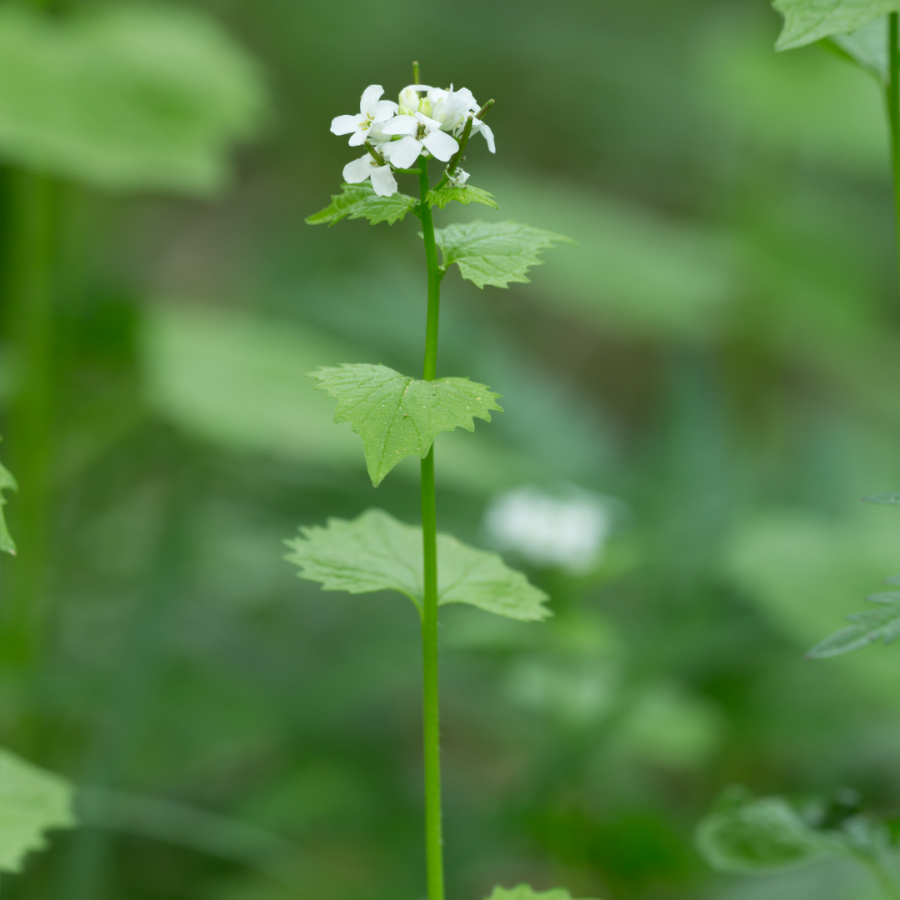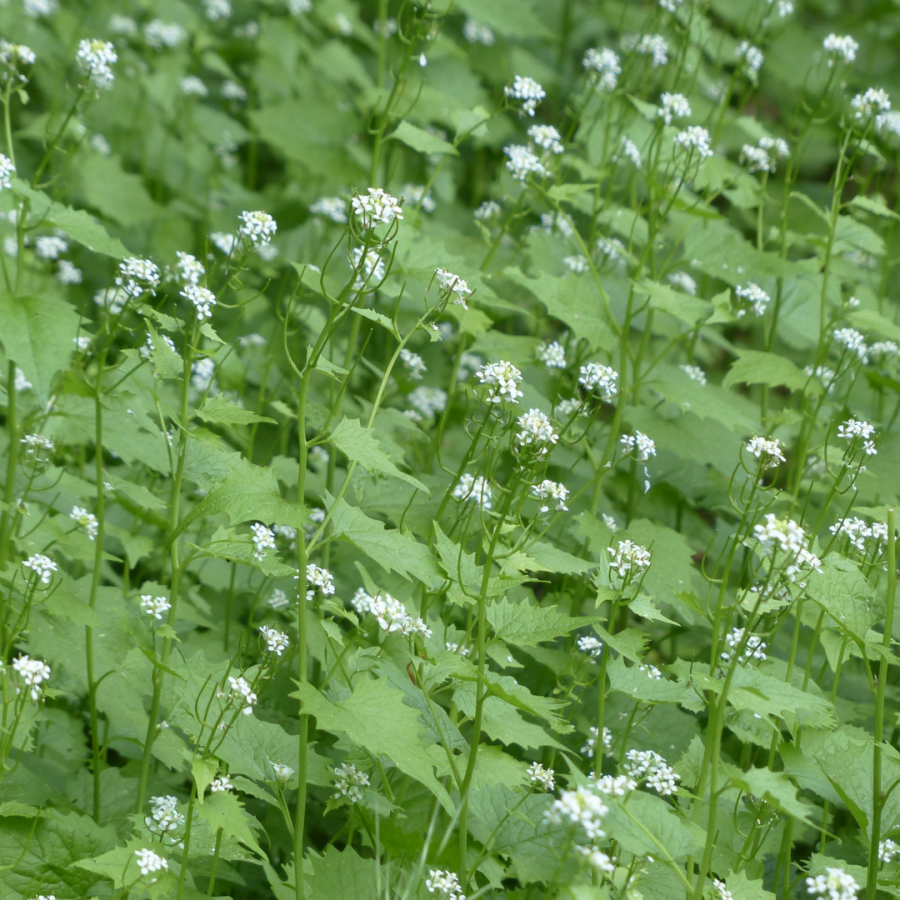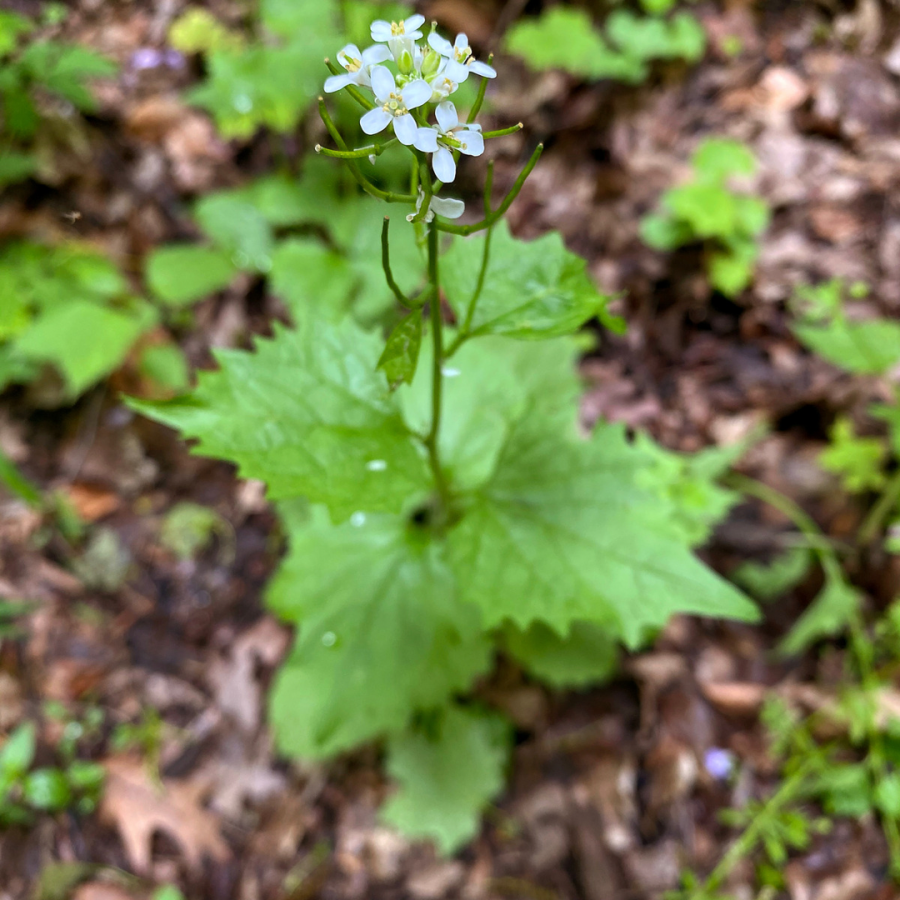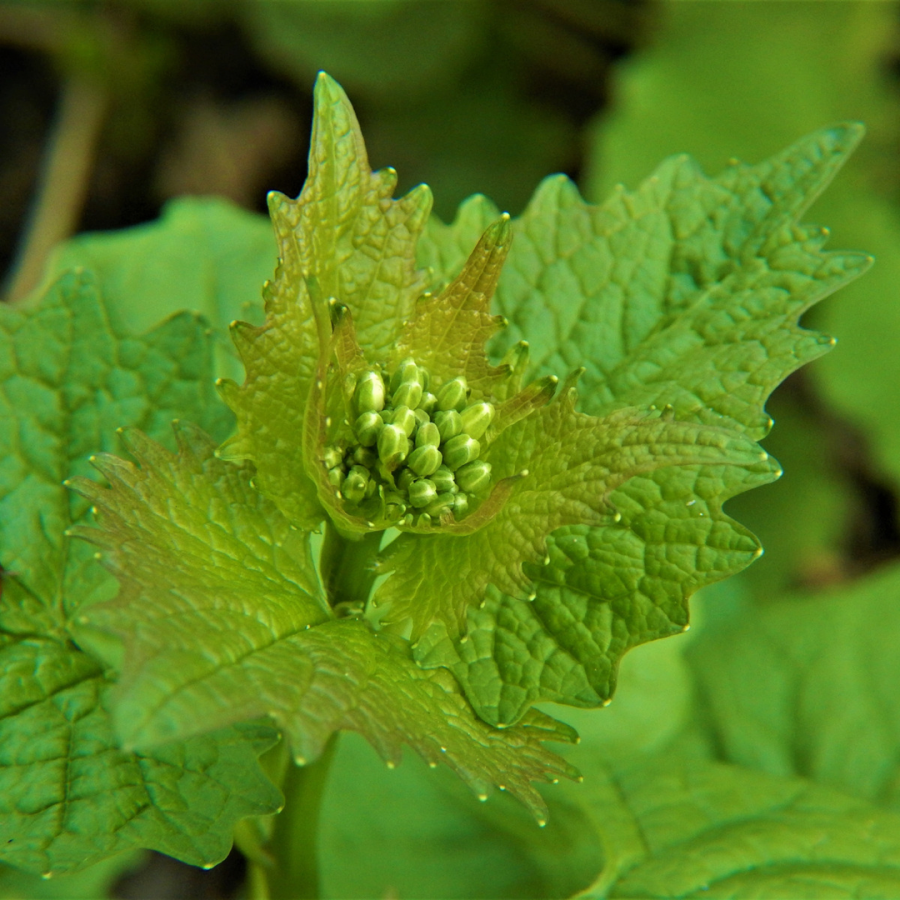Blog
This Plant Stinks!

By Tim Nabors, Naturalist
“This plant stinks...and it’s ugly, a bully, and unwelcome here!” —a direct quote from all of our local plants and animals.
Most anyone who has spent any time outdoors in our region has come across this not so lovely plant: garlic mustard (Alliaria petiolate).
Garlic mustard is a biennial plant, so it starts its first year as basal rosette and grows a thin (usually unbranched) stem, one to four foot in height during its second year. All parts of the plant have a garlicy smell when crushed.
The plant is also edible, and a quick internet search for recipes that feature this plant will bring numerous results. Being a fairly picky eater, they don’t look too appetizing, but that’s probably just me.

The problem with garlic mustard is that it can establish huge and dense colonies in our woodlands. Without natural predators or competition, this invader is able to grow unchecked. Even deer won’t touch it!
These thick colonies displace native plants. And this results not only in fewer native plants, but potentially the loss of wildlife that depend on them. As we all hopefully know and remember from school, biodiversity is extremely important in the natural world. Without it, we are all impacted. This small plant, along with other invasive species, creates huge problems to the health of our environment.

Hard stuff to think about, but for the garlic mustard problem we can all lend a hand to our environment by getting rid of it when we see it on the trails, in our backyard, or the side of a parking lot.
How? By pulling it out by hand! That’s it! Lift the little sucker out, roots and all, bag it and put into the trash. Never compost it—it can actually spread through compost!
The best time to try and remove this plant is when it first emerges in the spring, before it flowers. During this time of the year the ground is usually moist and by gently pulling up the plant by the stem base, you will pull up roots and all!

If you find it after it flowers, be careful when you pull it because it’s easy to spread the seeds. The seeds of this plant are viable in the ground for several years, so you may have to pick, repeat, pick, repeat for a time—but eventually it will give up and you will have had a hand in helping our native wildlife thrive!
More information about controlling garlic mustard and other invasive plants in Ohio can be found by visiting the Ohio Invasive Plant Council.